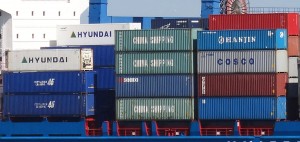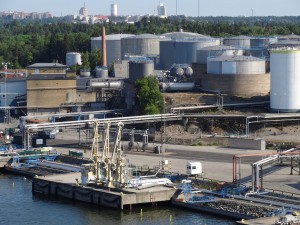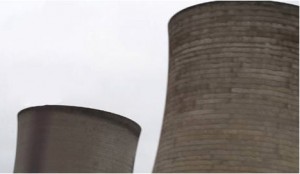 World leaders have been meeting in Rio de Janeiro at a United Nations Conference on Sustainable Development. The conference, dubbed ‘Rio+20’, refers back to the first UN Conference on Environment and Development (UNCED) held in Rio 20 years ago in June 1992.
World leaders have been meeting in Rio de Janeiro at a United Nations Conference on Sustainable Development. The conference, dubbed ‘Rio+20’, refers back to the first UN Conference on Environment and Development (UNCED) held in Rio 20 years ago in June 1992.
The 1992 conference adopted an Agenda 21. It was “comprehensive plan of action to be taken globally, nationally and locally by organizations of the United Nations System, Governments, and Major Groups in every area in which human impacts on the environment.”
The 2012 conference has looked at progress, or lack of it, on sustainability and what needs to be done. It has focused on two major themes: “how to build a green economy to achieve sustainable development and lift people out of poverty, including support for developing countries that will allow them to find a green path for development; and how to improve international coordination for sustainable development.” Issues examined have included decent jobs, energy, sustainable cities, food security and sustainable agriculture, water, oceans and disaster readiness.
But just what is meant by sustainable development? The conference defines sustainable development as that which meets the needs of the present without compromising the ability of future generations to meet their own needs. “Seen as the guiding principle for long-term global development, sustainable development consists of three pillars: economic development, social development and environmental protection.”
The articles below look at prospects for national and global sustainability. They also look at a new measure of national wealth, the Inclusive Wealth Index (IWI). This index has been developed under the auspices of the International Human Dimensions Programme on Global Environmental Change (IHDP) and published in its Inclusive Wealth Report 2012 (see report links below).
 The IWR 2012 was developed on the notion that current economic production indicators such as gross domestic product (GDP) and the Human Development Index (HDI) are insufficient, as they fail to reflect the state of natural resources or ecological conditions, and focus exclusively on the short term, without indicating whether national policies are sustainable.
The IWR 2012 was developed on the notion that current economic production indicators such as gross domestic product (GDP) and the Human Development Index (HDI) are insufficient, as they fail to reflect the state of natural resources or ecological conditions, and focus exclusively on the short term, without indicating whether national policies are sustainable.
The IWR 2012 features an index that measures the wealth of nations by looking into a country’s capital assets, including manufactured, human and natural capital, and its corresponding values: the Inclusive Wealth Index (IWI). Results show changes in inclusive wealth from 1990 to 2008, and include a long-term comparison to GDP for an initial group of 20 countries worldwide, which represent 72% of the world GDP and 56% of the global population. (Click on chart for a larger version.)
So will growth in IWI per capita be a better measure of sustainable development than growth in GDP per capita? The articles also consider this issue.
Articles: summit
Rio+20 deal weakens on energy and water pledges BBC News, Richard Black (17/6/12)
Rio+20: Progress on Earth issues ‘too slow’ – UN chief BBC News, Richard Black (20/6/12)
Rio+20 Earth Summit Q&A The Telegraph, Louise Gray (16/5/12)
Rio+20 Earth Summit: campaigners decry final document Guardian, Jonathan Watts and Liz Ford (23/6/12)
A catastrophe if global warming falls off the international agenda Observer, Will Hutton (24/6/12)
Analysis: Rio +20 – Epic Fail The Bureau of Investigative Journalism Brendan Montague (22/6/12)
Articles: IWI
Accounting for natural wealth gains world traction Atlanta Business NewsKaty Daigle (17/6/12) (see alternatively)
New index shows lower growth for major economies Reuters, Nina Chestney (17/6/12)
A New Balance Sheet for Nations: UNU-IHDP and UNEP Launch Sustainability Index that Looks Beyond GDP EcoSeed (20/6/12)
World’s leading economies lag behind in natural capital Firstpost (18/6/12)
Beyond GDP: Experts preview ‘Inclusive Wealth’ index at Planet under Pressure conference EurekAlert, Terry Collins (28/3/12)
New sustainability index created that looks at more than gross domestic product bits of science (17/6/12)
 For Sustainability, Go Beyond Gross Domestic Product Scientific AmericanDavid Biello (17/6/12)
For Sustainability, Go Beyond Gross Domestic Product Scientific AmericanDavid Biello (17/6/12)
Report
Inclusive Wealth Report 2012: Overview IHDP
Inclusive Wealth Report 2012: Summary for Decision-makers IHDP
Inclusive Wealth Report 2012: full report IHDP
Questions
- What progress has been made towards sustainable development over the past 20 years?
- What are the limitations of conferences such as Rio+20 in trying to achieve global action?
- With the current challenges faced by the eurozone and the global economy more generally, is this a good time to be discussing long-term issues of sustainable development?
- Explain how IWI is derived and measured?
- Looking at the chart above, explain the very different positions of countries in the three columns.
- What are the strengths and weaknesses of using growth in IWI compared with using growth in GDP as measures of (a) economic development; (b) economic wellbeing?
 With globalisation, more and more businesses have found it beneficial to ‘go global’. There are many reasons why a firm might choose to expand its production or market to other countries and one particular advantage is cutting costs in the manufacturing of products.
With globalisation, more and more businesses have found it beneficial to ‘go global’. There are many reasons why a firm might choose to expand its production or market to other countries and one particular advantage is cutting costs in the manufacturing of products.
Countries such as China and India have become leaders in production. Look at many of the items you own – I’m sure you’ll see a ‘Made in China’ or ‘Made in India’ amongst them. These fast emerging countries were highly sought after as places to produce due to much cheaper production costs. This advantage led to Western companies outsourcing much of their manufacturing base to China, as a means of retaining a competitive advantage.
However, the cost advantages that China boasted are now less significant and we may be about to see the emergence of a new manufacturing hub. Other countries that are further behind the BRICS in the development process now have cost advantages over places like China and so we may see another transfer of manufacturing to other parts of the world.
 When splitting up a supply chain to gain cost advantages a key consideration is the extent to which you lose control. Communication and co-ordination issues can emerge when design takes place in one country; production in another and then the products are sold around the world. When cost differences are huge, these problems can be overlooked, as what they might cost you in terms of lost time etc. is easily made up by savings through cheaper labour.
When splitting up a supply chain to gain cost advantages a key consideration is the extent to which you lose control. Communication and co-ordination issues can emerge when design takes place in one country; production in another and then the products are sold around the world. When cost differences are huge, these problems can be overlooked, as what they might cost you in terms of lost time etc. is easily made up by savings through cheaper labour.
However, when the cost advantages of production in China shrink, companies are still left with the problems of communication and co-ordination. These now represent more significant costs that could be reduced were production to revert to the country of design or if production were to be moved to an even cheaper country.
The following article from BBC News considers the issues surrounding the supply chain and how businesses may benefit from more collaboration.
Better collaboration lets businesses take back the supply chain BBC News, Alastair Sorbie (15/6/12)
Questions
- What are the arguments for becoming a multinational?
- Why do host countries, such as the BRICS accept inward investment? What do they gain from it?
- Explain how the product life cycle can affect the profitability of a MNC and how the company might respond.
- What are the disadvantages to a MNC from ‘going global’?
- What are the problems faced by developing countries acting as host nations?
- How has technology affected both big and small businesses?
 Cartels are formal collusive agreements between firms, typically to fix prices, restrict output or divide up markets. As in the case of monopoly, the lack of competition may harm consumers, who are likely to have to pay higher prices. This, as economic theory demonstrates, results in a reduction in overall welfare.
Cartels are formal collusive agreements between firms, typically to fix prices, restrict output or divide up markets. As in the case of monopoly, the lack of competition may harm consumers, who are likely to have to pay higher prices. This, as economic theory demonstrates, results in a reduction in overall welfare.
For this reason competition authorities throughout the world now impose substantial fines on firms found to be involved in collusive activities and participants also face the threat of substantial jail sentences.
One of the most famous cartels is the Organization of Petroleum Exporting Countries (OPEC). This is an agreement between 12 countries to limit their production of oil. The OPEC cartel has been in place for over 50 years. Arguably, the intergovernmental nature of the cartel and political ramifications of intervening have meant that OPEC has been able to operate free from prosecution for so long.
However, very interestingly Freedom Watch, a US public interest group founded by a former US Department of Justice lawyer, has this week filed a lawsuit against OPEC for violation of competition laws. Quoted in the above press release, Larry Klayman, the founder of Freedom Watch, says that:
These artificially-inflated crude oil prices fall hard on the backs of Americans, many of whom cannot afford to buy gasoline during these severely depressed economic times.
Furthermore, how some of the members use the profits gained from the cartel is also called into question. He also goes on to suggest that the lack of intervention from US government agencies may be because the leaders of both political parties:
… line their pockets from big oil interests and are just sitting back and not doing anything.
This is not the first time that Freedom Watch has served a lawsuit on OPEC. In 2008, at an OPEC meeting in Florida:
In a bold move in front of members of the news media, Freedom Watch Chairman and Chief Legal Counsel Larry Klayman literally jumped out from behind a line of TV cameras and microphones on Friday, October 24, to serve a complaint on an OPEC oil minister.
That complaint was unsuccessful.
It will be fascinating to see the outcome of this latest case and, if successful, the implications for OPEC – updates to appear on this blog in due course.
Articles
Profile: Opec, club of oil producing states BBC News (01/02/12)
OPEC accused of conspiracy against consumers WND World, Bob Unruh (09/05/12)
Freedom Watch Attorney Sues OPEC Oil Minister for Economic Terrorism Conservative Crusader, Jim Kouri (31/10/08)
Lawsuits
Lawsuit brought by Freedom Watch inc. against OPEC (7/5/12)
Lawsuit brought by Freedom Watch inc. against OPEC (9/6/08)
Questions
- Why are cartels so severely punished?
- Why might it be important to punish the individuals involved as well as fine the cartel members?
- Why is fixing the price of oil particularly harmful for the economy?
- Why do you think the OPEC cartel has survived for so long?
- What do you think might be the long term implications of the lawsuit for OPEC?
 EDF, one of the big six energy retailers in the UK, has agreed to pay out a record £4.5m. £1m of this will go to funding an energy advice centre; the rest will go to providing £50 each to 70,000 ‘vulnerable customers’ who struggle to pay their bills and who receive the government’s warm home discount.
EDF, one of the big six energy retailers in the UK, has agreed to pay out a record £4.5m. £1m of this will go to funding an energy advice centre; the rest will go to providing £50 each to 70,000 ‘vulnerable customers’ who struggle to pay their bills and who receive the government’s warm home discount.
The agreement was made with Ofgem after an investigation into mis-selling, both on the doorstep and over the phone. Customers were persuaded to switch energy suppliers with the promise of savings on their bills. As the FT articles states:
Ofgem found that EDF’s sales force did not always provide complete information to customers on some contract terms, or on the way in which their monthly direct debits had been calculated. In some cases, telesales agents claimed savings without knowing whether they were accurate for the specific customer on the call, the regulator said.
Ofgem did not accuse the company of directly sanctioning such practices, but rather of weak monitoring and control of its sales force’s actions.
The £4.5m payment is in lieu of a fine. Consumer groups have welcomed this, preferring the company to pay compensation to a fine, which would have simply increased Treasury funding.
It is the first settlement in a broader investigation into mis-selling, involving four of the six major suppliers.
Articles
EDF to pay out £4.5m in mis-selling case Financial Times, Guy Chazan and Hannah Kuchler (9/3/12)
EDF agrees to pay £4.5m misleading sales ‘fine’ Guardian, Lisa Bachelor (9/3/12)
Is it a fine? Is it a penalty? No, it’s EDF’s mystery Ofgem payment Management Today, Rebecca Burn-Callander (9/3/12)
‘Misleading claims’ cost EDF a £4.5m payout from watchdog , Independent, Tom Bawden (10/3/12)
EDF Energy agrees to pay a £4.5m ‘fine’ BBC News (9/3/12)
 EDF Energy agrees to pay a £4.5m ‘fine’ BBC News, John Moylan (9/3/12)
EDF Energy agrees to pay a £4.5m ‘fine’ BBC News, John Moylan (9/3/12)
More energy payouts could follow EDF’s £4.5m The Telegraph, Kara Gammell (9/3/12)
Ofgem ruling
EDF energy agrees to invest £4.5 million to help vulnerable customers following Ofgem investigation Ofgem
Questions
- What types of market failure are present in the energy supply industry?
- What are the arguments for and against fines being paid directly to victims of crime rather than to the government?
- In what ways could the energy industry be made more competitive?
- Why do the utilities, such as gas, electricity and water, require their own regulator rather than simply being subject to competition law?
 Advertising is a costly venture, but for firms in a highly competitive market it can be essential for success. During the recession, many firms had to make a variety of cut backs and reduced advertising for many was one of the key areas to go.
Advertising is a costly venture, but for firms in a highly competitive market it can be essential for success. During the recession, many firms had to make a variety of cut backs and reduced advertising for many was one of the key areas to go.
However, one of the leading advertising companies – WPP – has posted significant profits this year, which are up by some 18.5%, reaching £1.008bn. According to Sir Martin Sorrell, a key factor in this success is that many firms, whilst not looking to increase their market share, have felt the need to continue advertising, simply to maintain their existing market share. This has become especially important in growing markets, as competition has become more and more intense.
This new is not only good for the company in question, but also for the UK economy, as the firm has said that it will be moving its headquarters back from Ireland to the UK. This is assuming that legislation is passed concerning the taxation of profits earned abroad. If this relocation does go ahead, it could mean the creation of many more jobs in the UK and a boost to tax revenues, both of which are crucial for the UK economy. As Sir Martin Sorrell said:
‘I am delighted to say that the last remaining issues I think have been removed subject to legislation being introduced in Parliament. We will be coming back subject to shareholder approval’.
WPP believes growth throughout 2012 will be high, due to events such as the Olympics and the US Presidential elections, together with its strength in emerging economies. At the moment, this all looks like good new for the UK and oh how it’s needed!
WPP profit up ahead of 2012 Olympics boost Reuters (1/3/12)
WPP’s Martin Sorrell says he is likely to move HQ back to London Guardian, Mark Sweney (1/3/12)
Olympics, Election to boost WPP Wall Street Journal, Kathy Gordon (1/3/12)
WPP breaks £1bn profit barrier Guardian, Mark Sweney (1/3/12)
WPP boosts dividend after strong year Financial Times, Tim Bradshaw and Mark Wembridge (1/3/12)
WPP profits reach record in 2011 BBC News (1/3/12)
Questions
- What is market share and how can it be calculated?.
- What is the purpose of advertising. Using a supply and demand diagram, illustrate the effect the advertising should have. Think about the position and the shape of the curves.
- Why is advertising an area that did see cut backs throughout the recession?
- Do you think that advertising is more important for firms in growing markets? Explain your answer.
- Why did WPP relocate to Ireland and what may bring it back to the UK?
- How have WPP’s dividend payments been affected by this latest profit information?
- During a recession, competition tends to become more intense. Why is this and what role does advertising play?
 World leaders have been meeting in Rio de Janeiro at a United Nations Conference on Sustainable Development. The conference, dubbed ‘Rio+20’, refers back to the first UN Conference on Environment and Development (UNCED) held in Rio 20 years ago in June 1992.
World leaders have been meeting in Rio de Janeiro at a United Nations Conference on Sustainable Development. The conference, dubbed ‘Rio+20’, refers back to the first UN Conference on Environment and Development (UNCED) held in Rio 20 years ago in June 1992.The IWR 2012 was developed on the notion that current economic production indicators such as gross domestic product (GDP) and the Human Development Index (HDI) are insufficient, as they fail to reflect the state of natural resources or ecological conditions, and focus exclusively on the short term, without indicating whether national policies are sustainable.
 For Sustainability, Go Beyond Gross Domestic Product Scientific AmericanDavid Biello (17/6/12)
For Sustainability, Go Beyond Gross Domestic Product Scientific AmericanDavid Biello (17/6/12)



